Tires November 15, 2019
Shopping for new tires too soon? Maybe you expected them to last another year or two, but the tire tread is already worn down and you need to replace them now. You could go buy new tires, but, first, check to see if your tires are still covered under the tire manufacturer’s warranty.
Unlike most consumer products that offer a 3-, 6-, or 12-month warranty, tire warranties cover tires for multiple years, typically until your tires reach a certain mileage or tread depth. They cover things like tread life, workmanship, materials, and uniformity.
Keep scrolling to learn more about the types of manufacturer warranties offered and to find out if your tires are under warranty.
Types of Tire Warranties Mileage Warranty / Tread Life WarrantyA tread life or mileage warranty is the most well-known type of tire warranty. If your tires come with this type of warranty, the manufacturer will replace the tires at a prorated* value if the tire tread wears out before it’s supposed to.
It sounds like a great deal, but make sure to check the restrictions and exclusions for the offer. Typically, a mileage warranty only applies to the tires’ original owner and vehicle. Also, it is only valid if the claim is within a set time period (usually 6 years) and the owner followed manufacturer guidelines for tire rotations, wheel alignments, tire inflation and other maintenance services.
Most importantly, tread life warranties only allow you to claim a refund if the tire has 2/32” or less of tread left. This is less than the recommended tire tread depth and will fail a Virginia State Safety Inspection. You might be able to get a little money back by driving your tires until that point, but we think the safety risks outweigh any potential benefits.
*A tread life warranty does not give you cash back. The prorated amount is good for a credit off the standard retail price of a comparable tire from the same manufacturer.
Workmanship & Materials WarrantyA Workmanship and Materials Warranty protects buyers from issues or defects within the manufacturer’s control.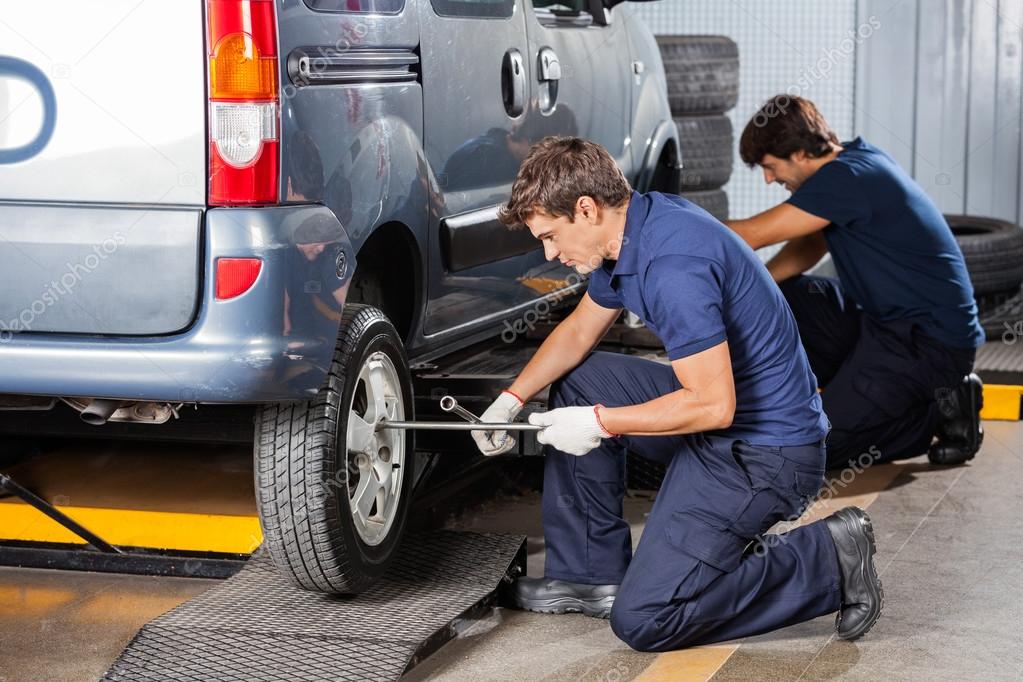 This includes issues like irregular wear, tread separation or broken belts within the tire. If you submit a claim within 12 months of purchase and the tire has more than 75% of its original tread, they will usually replace it free of charge. Beyond that, you are compensated based on the prorated life of the tire.
This includes issues like irregular wear, tread separation or broken belts within the tire. If you submit a claim within 12 months of purchase and the tire has more than 75% of its original tread, they will usually replace it free of charge. Beyond that, you are compensated based on the prorated life of the tire.
The tire industry maintains tight quality control, but occasionally a tire will be out-of-round and cause a ride disturbance. Tire manufacturer warranties account for this possibility and will replace a defective tire. However, if the manufacturer deems that a defect is related to improper maintenance, vandalism, road hazards or an accident, the claim will be denied.
Because of their high level of quality control, manufacturers tend to believe that issues cannot exist on more than one tire, so they usually only grant coverage for a single tire. Also, make sure to submit your claim early. Most problems caused by these defects show up early in a tire’s life, so manufacturers assume that it should be identified and corrected early (within 1/32” to 2/32” of treadwear loss or six to twelve months of service).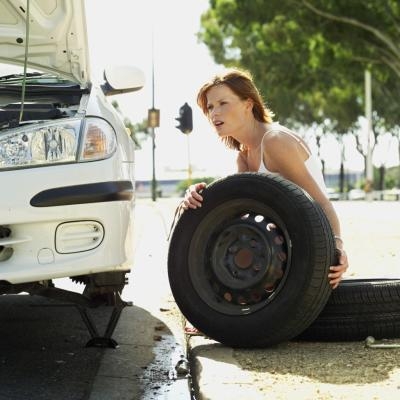
Many manufacturers now offer a 30-, 45- or 60-day satisfaction guarantee. This guarantee allows customers to “test drive” their new tires. If unsatisfied, the customer can exchange the tires for a different set (of the same tire brand) within the set time frame. The guarantee becomes void if the tires are damaged by a road hazard, misused, or used in any racing-related activity.
At Virginia Tire & Auto, we go beyond what most tire manufacturers offer with our 60-Day Ride Guarantee. No matter the tire brand, if you don’t like the tires you bought from us, bring them back within 60 days and we’ll exchange them for a different set.
Manufacturer Road Hazard WarrantyA few tire brands offer a limited road hazard warranty that covers irreparable damage caused by potholes, nails, glass and other hazards. This type of limited warranty typically covers tires for one year or the first 2/32” of tread life, whichever comes first.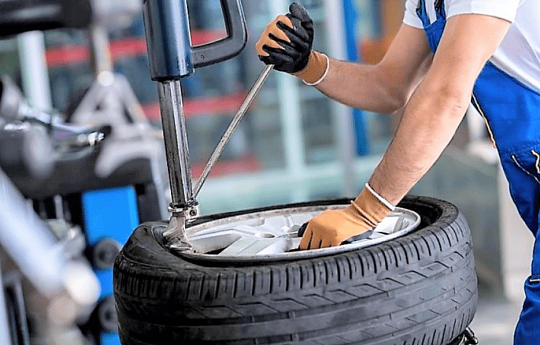
If your tires come with a manufacturer road hazard warranty, make sure you know what is covered and what is not. You may want to consider purchasing an additional road hazard warranty/tire protection policy from your tire retailer for extra protection.
Tire Protection PlanWant more coverage? Consider adding our Tire Protection Plan (TPP) to your next tire purchase. Available on all tire purchases at Virginia Tire & Auto, our TPP provides free flat tire repairs for the usable life of the tire and tire replacement coverage for three years.
Read: Tire Protection Plan: Is It Worth It?
Claiming Your Tire WarrantyHere are some basic guidelines to follow to make sure you are able to claim your tire warranty:
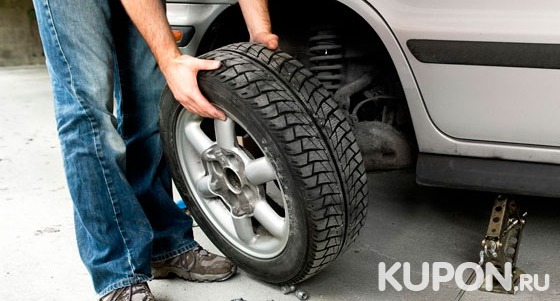
At Virginia Tire & Auto, we make it easy to keep up with tire maintenance. That’s because every new tire purchase comes with tires&, our easy installation and worry-free driving tire bundle. It includes benefits like nitrogen inflation, Roadside Assistance, and lifetime tire rotations and wheel balances. It’s one more way we’re taking the stress out of car care! Check out our VTA Tire Collection or stop by one of our convenient locations to find the perfect tires for your vehicle.
Automotive>Tires & Brakes
March 16, 2017
A low price doesn’t always mean the tire you’re considering is a good value.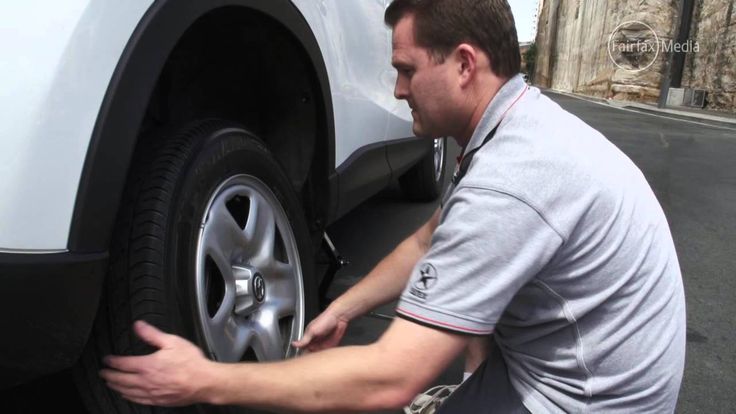 Its advertised tread life and the warranty that backs it up are just as important. Should your tire fail, a good warranty can protect you from having to shell out full price for a replacement tire. But qualifying for that replacement tire isn’t always black and white. So, it’s best to study the warranty’s terms carefully.
Its advertised tread life and the warranty that backs it up are just as important. Should your tire fail, a good warranty can protect you from having to shell out full price for a replacement tire. But qualifying for that replacement tire isn’t always black and white. So, it’s best to study the warranty’s terms carefully.
It’s a crowded playing field in tire warranty land. Here’s a rundown of what’s available:
Protects you against prematurely reaching the tiremaker’s tread-life rating, generally set between 40,000–100,000 miles. Virtually every tiremaker offers some type of prorated tread-life warranty.
Protects you against flat tires from pot holes, debris, nails, glass and other hazards. Closer to an insurance policy than a warranty. Usually an add-on from the tire dealer that you can purchase.
Protects you against any defects in the manufacturing or materials used in the tire. Issued by the manufacturer of the tire, usually for the life of the tire.
More a money-back satisfaction guarantee than a warranty. Issued by the tire manufacturer for a limited period of time, usually up to 30 days after purchase.
Protects you from excessive vibration or ride disturbance caused by the tire if you notify the tiremaker within the first 2/32nds of an inch (approximately 6,000 miles) of tire tread.1
Most tread-life warranties will not replace a prematurely worn out tire at no cost. Instead, they offer a prorated replacement price, based on the mileage that remains. Let’s say you bought a tire with a 60,000 mile warranty and it wore out at 40,000 miles. That means you used 70% of the warranty mileage (40,000 ÷ 60,000 = .70). In this case, you would receive a 30% (1.00 - .70 = .30) discount on a new replacement tire.
That means you used 70% of the warranty mileage (40,000 ÷ 60,000 = .70). In this case, you would receive a 30% (1.00 - .70 = .30) discount on a new replacement tire.
The purpose of any product warranty is to give consumers peace of mind that the manufacturer stands behind its products and promises. While tread-life warranties do that, the tire buyer is responsible for maintaining the tires in warrantable condition. In fact, poor maintenance is the biggest reason warranty claims are denied. So keep your tires inflated to the recommended tire pressure to ensure even wear. And rotate them based on the tiremaker’s recommendation, keeping a record of the service. Hold onto your original purchase receipt, too, as you’ll need to prove when the tires were purchased.2
A road hazard warranty doesn’t cover everything. Cosmetic and structural damage to tires caused by collisions with curbs or abnormal wear and tear is usually not covered. Nor are tire failures caused by accidents, theft, vandalism, misuse or negligence.3
Nor are tire failures caused by accidents, theft, vandalism, misuse or negligence.3
Unless you are willing to check your tires’ inflation pressure at least once a month and get your tires rotated every 5,000 miles, you stand a chance of voiding your warranty.
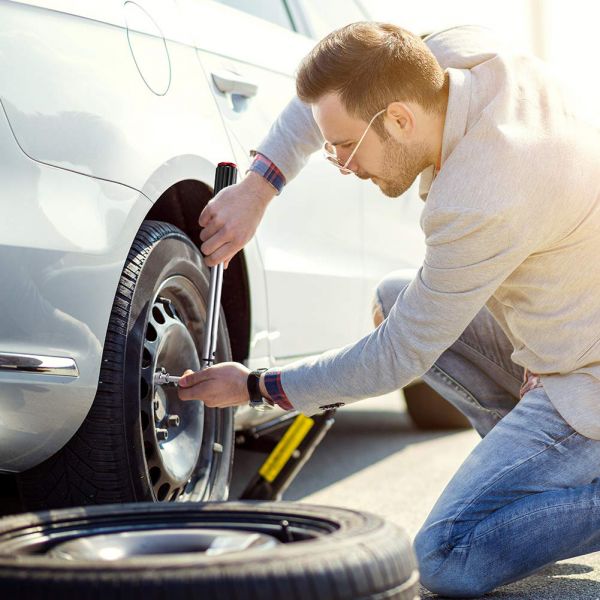 edmunds.com/auto-warranty/understanding-tire-warranties.phtml
edmunds.com/auto-warranty/understanding-tire-warranties.phtmlDisclaimer: We include links to another website in this article for your convenience. We do not endorse any content on these sites.
All product names, logos, and brands are property of their respective owners. All company, product and service names are for identification purposes only. Use of these names, logos, and brands does not imply endorsement.
This content is subject to change without notice and offered for informational use only. You are urged to consult with your individual business, financial, legal, tax and/or other advisors with respect to any information presented. Synchrony and any of its affiliates (collectively, “Synchrony”) make no representations or warranties regarding this content and accept no liability for any loss or harm arising from the use of the information provided. Your receipt of this material constitutes your acceptance of these terms and conditions.
© 2022 Synchrony Bank. image}}{{#icon}}{{{icon}}}{{/icon}}{{/image}}
image}}{{#icon}}{{{icon}}}{{/icon}}{{/image}}
{{#description}}
{{{description}}}
{{/description}}
{{/hits}}
{{#showAllResults}}
Show all results
{{/showAllResults}} {{/total_hits}}
Russia
Danmark
Deutschland
Global (English)
Italia
Nederland
North America (English)
North America (French)
Polska
Switzerland
Sverige
Turkey
Osterreich
Belarus
Bulgaria
Kazakhstan
Ukraine
中国(简体中文) 9expander. close}}-{{/expander.close}}
close}}-{{/expander.close}}
{{/children.length}}
{{/href}} {{#children.length}}{{text}}
1. PURCHASE NOKIAN TIRES FROM A PROGRAM MEMBER
Choose a convenient retail outlet on the map or see the full list of
2. ACTIVATE THE WARRANTY
Register your purchase within 30 days on the activation page using the data from the receipt. If you contact us, we will be able to identify you according to the data entered for the provision of services.
If you contact us, we will be able to identify you according to the data entered for the provision of services.
Extended Warranty Paper Vouchers also remain valid for the duration of the Promotion Terms.
3. REPAIR/REPLACE YOUR DAMAGED TIRE FREE OF CHARGE 9Nokian Tyres Hakkapeliitta R5 EV
Nokian Tyres Hakkapeliitta R3
Nokian Tyres Hakkapeliitta R3 SUV
Nokian Tyres Hakkapeliitta R2
Nokian Tyres Hakkapeliitta R2 SUV
Nokian Tyres Hakkapeliitta C4
Nokian Tyres Hakkapeliitta CR4
Nokian Tyres Hakkapeliitta C3
Nokian Tyres Hakkapeliitta CR3
Nokian Tyres Hakkapeliitta LT3 (except size 315/70 R 17 121/118S)
Nokian Tires Nordman 8
Nokian Tires Nordman 8 SUV
Nokian Tires Nordman 7
Nokian Tires Nordman 7 SUV
Nokian Tires Nordman RS2
Nokian Tires Nordman RS2 SUV
Nokian Tires Nordman SZ2
Nokian Tires Nordman S2 SUV
Nokian Tires Outpost AT (when purchased from 15.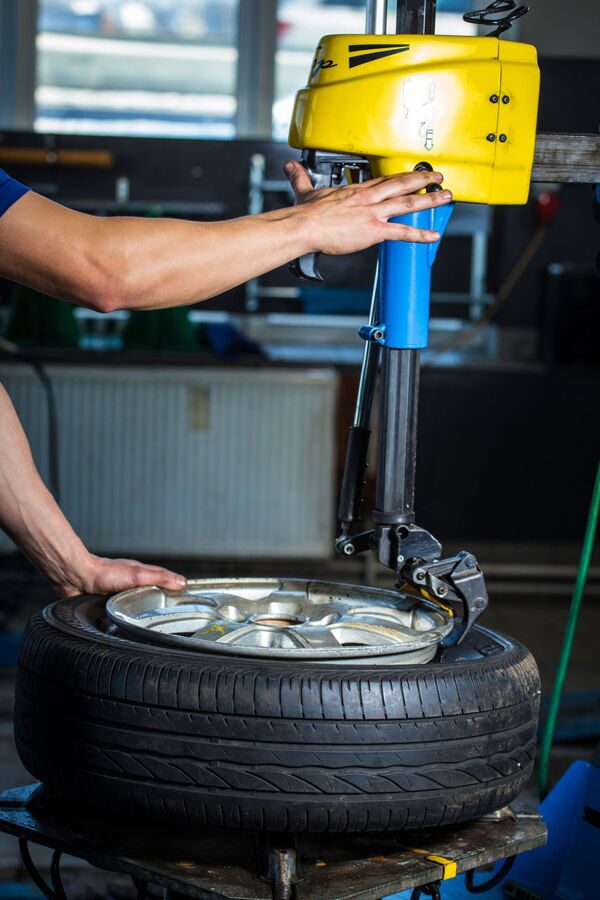 08.2022)
08.2022)
*up to 9003 mm tread depth
What documents are required to apply for an Extended Warranty?
Do I need an appointment to apply for an Extended Warranty?
When is a tire repaired and when is it replaced?
Will I get a free tire service under the Extended Warranty?
In what cases is the Extended Warranty Service not available to the Buyer?
Still have questions about the Extended Warranty? We are ready to help you around the clock.
Hotline in Russia — 8 800 250 88 50 (toll-free)
E-mail — [email protected]
The Nokian Tires Extended Warranty is in addition to the standard warranty conditions.
The full terms of the Extended Warranty program are available here.
The terms and scope of services under the Extended Warranty are determined by the year the tires were purchased.
If you have a question about the Extended Warranty, please contact us at our 24/7 hotline 8 800 250 88 50 (toll-free).
Extended Warranty Terms for Previous Purchase Periods
Contents
/ Buyer / Warranty
The presented Extended Warranty Programs are valid only on the territory of the Russian Federation. The programs do not operate in the Republics of Kazakhstan and Belarus.
The programs do not operate in the Republics of Kazakhstan and Belarus.
The warranty period is the period during which the customer (buyer), upon discovering a defect in the goods, has the right to demand from the seller or manufacturer to take measures to eliminate the defect. The seller must eliminate the defects, unless it is proved that they arose as a result of violations by the buyer of the rules of operation.
The warranty period is established for each product by the manufacturer of this product and is indicated in the product documents or warranty documents issued by the Seller.
In accordance with Art. 26.1. Law of the Russian Federation No. 2300-I "On Protection of Consumer Rights", the buyer has the right to refuse the goods at any time before its transfer, and after the transfer of the goods - within seven days.
26.1. Law of the Russian Federation No. 2300-I "On Protection of Consumer Rights", the buyer has the right to refuse the goods at any time before its transfer, and after the transfer of the goods - within seven days.
According to Art. 25 of the Law of the Russian Federation No. 2300-I “On Protection of Consumer Rights”, the buyer has the right to exchange goods of good quality for a similar product from the seller if the specified product does not fit in shape, dimensions, style, color, size or configuration. The buyer has the right to exchange goods of good quality within fourteen days, not counting the day of purchase.
If a similar product is not available for sale on the day the buyer contacts the seller, the buyer has the right to demand a refund of the amount paid for the specified product.
The demand of the consumer for the return of the amount of money paid for the specified goods is subject to satisfaction within three days from the date of return of the specified goods.
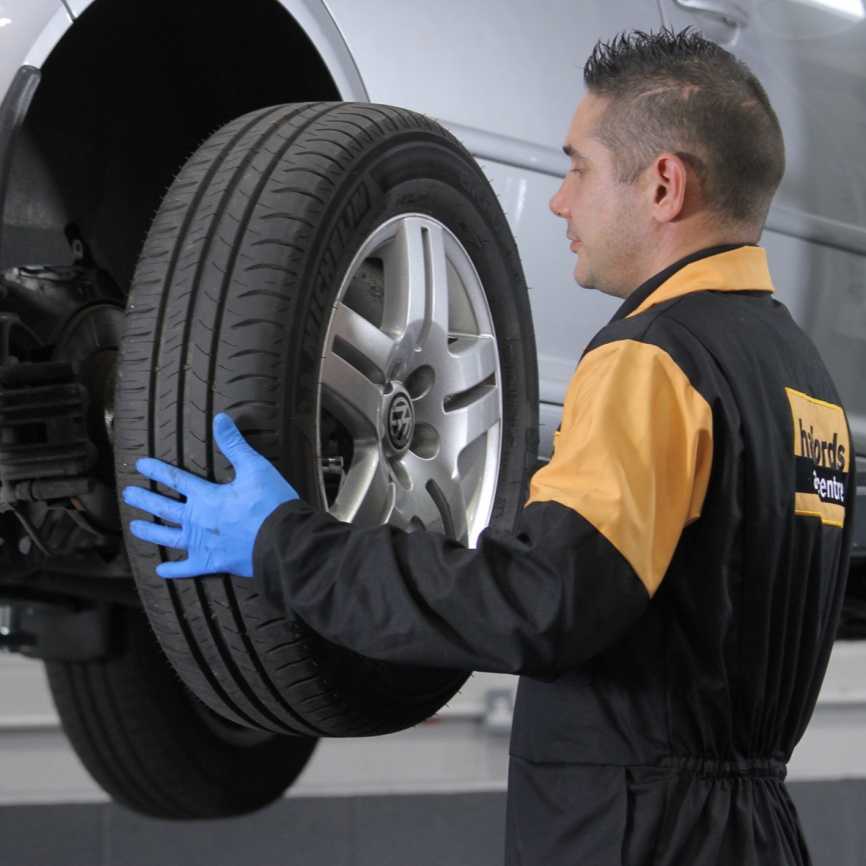
Return of goods of proper quality is possible if its presentation, consumer properties, as well as a document confirming the fact and conditions of purchase of the specified goods are preserved. The buyer's lack of a document confirming the fact and conditions of the purchase of goods does not deprive him of the opportunity to refer to other evidence of the purchase of goods from this seller.
The buyer is not entitled to refuse goods of proper quality, having individually defined properties, if the specified goods can be used exclusively by the buyer acquiring it.
If the buyer refuses the goods, the seller must return to him the amount of money paid by the buyer under the contract, with the exception of the seller's expenses for the delivery of the returned goods from the buyer, no later than ten days from the day the buyer presents the corresponding demand. By the time the money is returned, the Goods must be transferred by the Buyer to the Seller.
If the product purchased by the Buyer in the online store belongs to the "List of non-food products of good quality that cannot be returned or exchanged for a similar product of a different size, shape, size, style, color or configuration", approved by the Decree of the Government of the Russian Federation of 19.01.1998 No. 55, then the return or exchange of such goods is not possible.
The Buyer informs the Seller about the intention to return the goods to the Seller by sending a letter (message) to the Seller's e-mail address with details for transferring funds.
The buyer, in case of detection of defects in the goods, if they were not specified by the seller, at his choice, has the right:
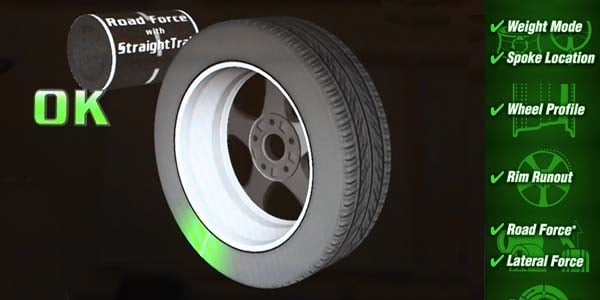
At the request of the seller and at his expense, the buyer must return the goods with defects. Art. 18-24 of the Law of the Russian Federation No. 2300-I "On Protection of Consumer Rights".
Source: https://www.kolesa-darom.ru/buyer/garantiya/
A car tire is a rubber elastic shell that is installed on a disc rim.
It is she who is in direct contact with the surface of the roadway and is directly designed to reduce small vibrations on the roads, as well as to compensate for flaws in the trajectory of the wheels.
During operation, it is subjected to strong loads of a diverse nature, therefore it naturally has its own service life, which is influenced by a number of factors.
Next, we will talk in detail about:
Expiration date is the period during which the company guarantees the possibility of using the product for its intended purpose and is fully responsible for defects that arose through its fault.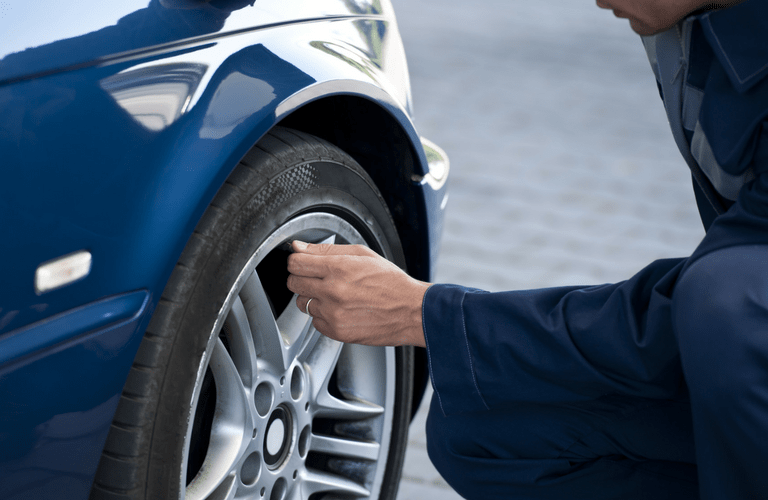
When buying tires, you need to make sure that no more than three years have passed from the moment of production. The date of manufacture and any other information is very easy to find out, it is indicated on the tire label among the general information about dimensions, design, speed and load ratings.
Tire production date
Russian legislation establishes the service life of car tires under warranty in accordance with GOST 4754-97 and GOST 5513 - 5 years from the date of manufacture, but for tires, first of all, the main indicator is the quality of the product, not time its use.
According to GOST, the average tire life should be calculated in the following order:
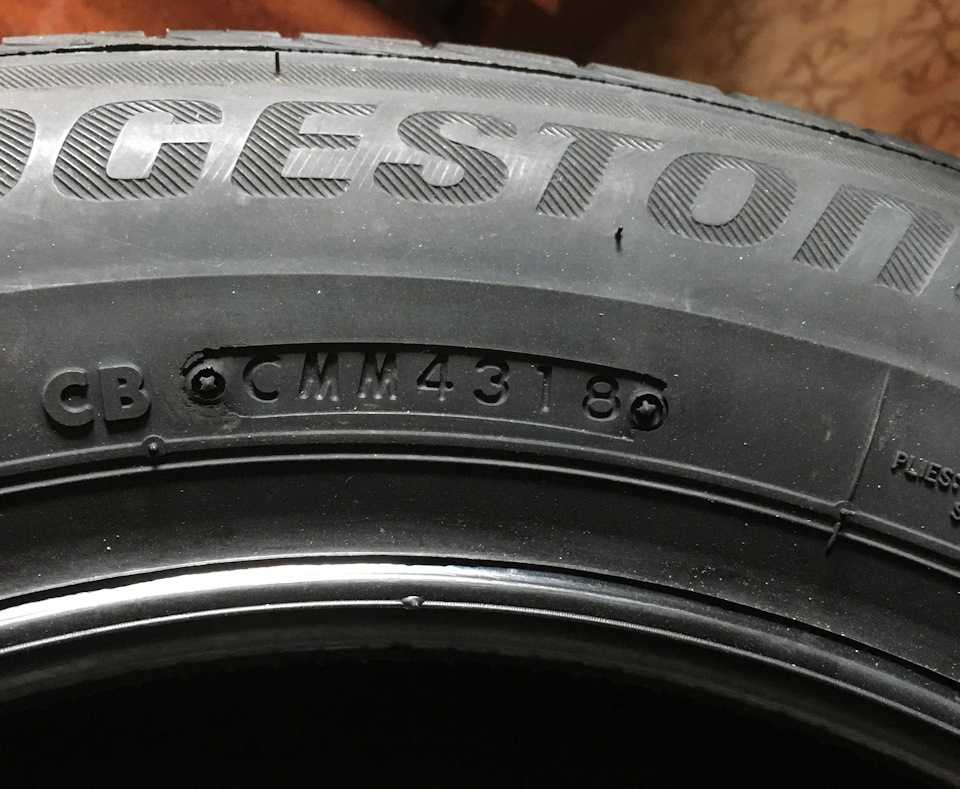
Experts recommend replacing tires before they reach their expiration date.
Some motorists believe that if the rubber is rarely used, while its age is already 5-6 years old, but this is an erroneous opinion! Indeed, due to the fact that defects appear in tires during operation and storage, they are associated with its oxidation and cracking - at a critical moment, it can let you down.
Shelf life is a certain period during which the product, subject to the established rules of storage and operation, must retain all its properties. If the shelf life has expired, this does not mean at all that the product is unsuitable for use, but its technical characteristics may decrease.
Tires can age through physical and chemical processes, this hypothesis applies to tires that are not used or little used.
To prevent the aging process itself, special substances are added to the rubber compound to help counteract harmful chemical compounds with oxygen and ozone.
This will ensure that the tire will meet the definition of a new tire when stored properly.
It should be noted that the warranty shelf life is not the service life of . The storage period for five years is set, not because the tire will deteriorate after that, but because, according to the law, the manufacturer does not have the right to establish a shorter warranty period, which is protection for the end user.
In recent years, many American experts believe that the shelf life and operation of car tires should be limited to 10 years. In turn, German experts believe that the expiration date of tires should be limited to 6 years, this also applies to new tires.
Rules and norms for storage of pneumatic tires according to GOST 24779-81:
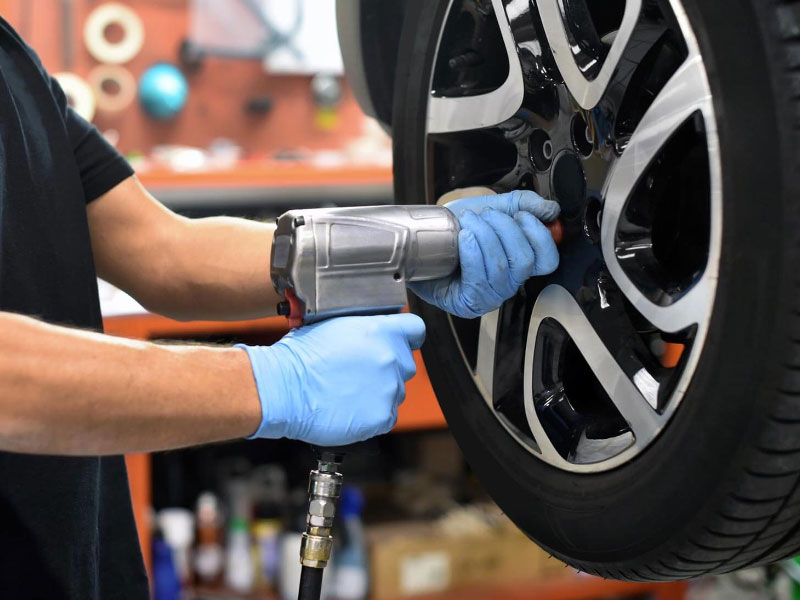
For a complete list of rules and recommendations for proper tire storage, see the article “How to store car tires”.
Well-known brands of imported tires, such as: Bridgestone, Michelin, Goodyear and Dunlop last up to 10 years or more from the date of manufacture, this period is generally accepted throughout the world. But the total expiration date and storage in the warehouse, from the date of issue, tires Continental is no more than 5 years.
Although, as we have already figured out, the storage conditions of tires mean a lot, not only new ones, but also those that were removed from the car until the next season. For example, nokian tires have a shelf life of 3-5 years, subject to inspection at least 1 time per year, after 5 years of use.
For example, nokian tires have a shelf life of 3-5 years, subject to inspection at least 1 time per year, after 5 years of use.
Unfortunately, the legislation does not establish the permissible storage periods for tires in a warehouse, but experts believe that a tire that has lain there for about 5 years is still equal to a new one.
The tire life of a vehicle is the length of time the manufacturer warrants the tires and takes full responsibility for any defects found during use. According to manufacturers, tires should last at least ten years, although in practice they have to be replaced approximately every 5-6 years, in some cases even less.
There are many different factors that affect the wear of car tires, the main ones are listed below:
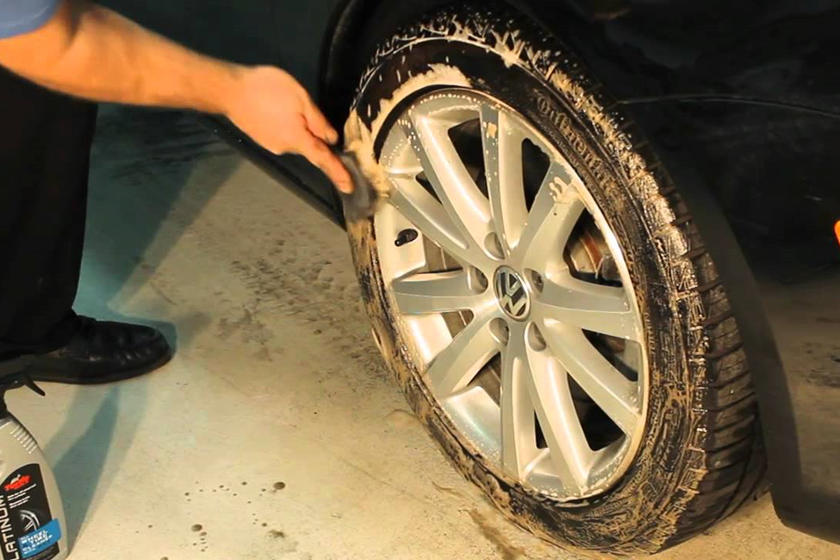
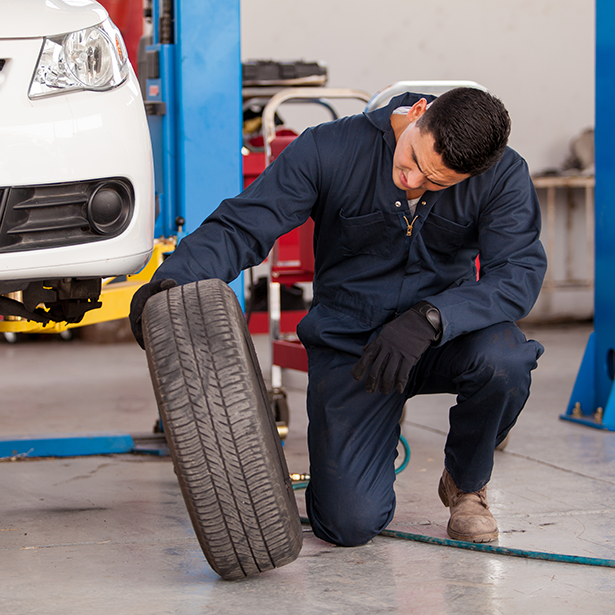 When choosing tires, you need to pay attention to the manufacturer, because fakes are often sold under well-known brands.
When choosing tires, you need to pay attention to the manufacturer, because fakes are often sold under well-known brands. Next, let's take a closer look at the instructions for certain actions that need to be taken in case of wear on car tires.
When diagnosing tires, in addition to the fact that it is imperative to pay attention to the degree of wear, there are also other equally important factors indicating the end of the service life.
In order to determine when the life of car tires ends with a detailed inspection, you need to pay attention to the following points:
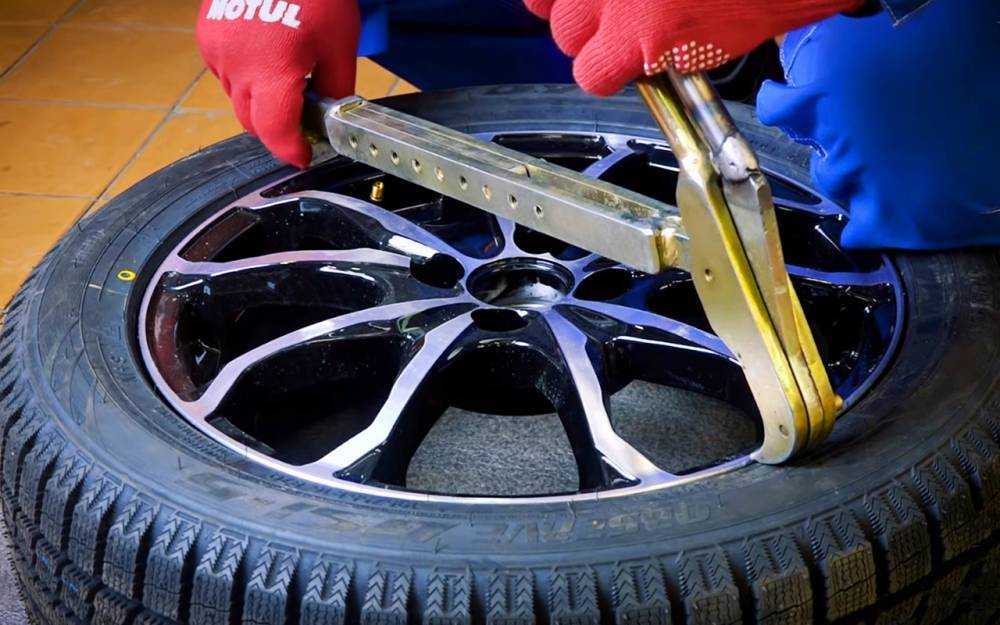 In order to measure the tread height, you can use a ruler with a special depth gauge. For summer tires, this parameter should be equal to more than 1.6 mm, in turn, for winter tires - more than 4 mm. If these parameters are less, then it is necessary to replace the tires. When the wear is uneven, then measurements should be taken in the area where the wear is most visible. Otherwise, if the tread edge is worn on only one side, then the camber-toe angle has been violated.
In order to measure the tread height, you can use a ruler with a special depth gauge. For summer tires, this parameter should be equal to more than 1.6 mm, in turn, for winter tires - more than 4 mm. If these parameters are less, then it is necessary to replace the tires. When the wear is uneven, then measurements should be taken in the area where the wear is most visible. Otherwise, if the tread edge is worn on only one side, then the camber-toe angle has been violated. 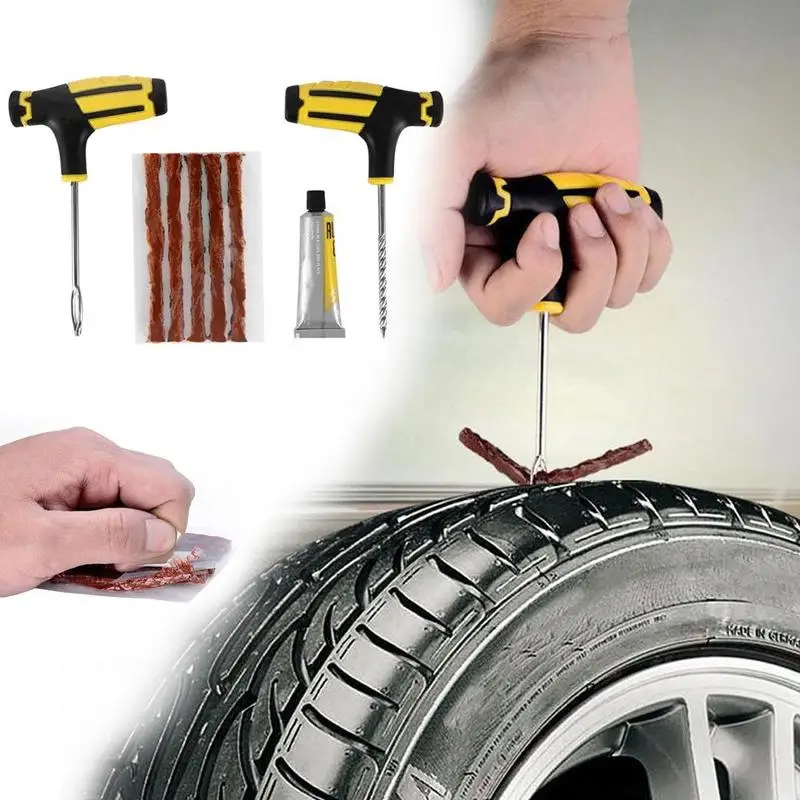
When any defects were noticed in the tires, it is recommended to carry out a replacement, and not a rescue restoration, in order to somehow extend the period of use.
To prolong the life of car tires, you need to periodically diagnose them.
In order for your tires to last longer, you need to follow certain rules of use:
Since there is always more wear on the front (driving) wheels, then every 10-15 times.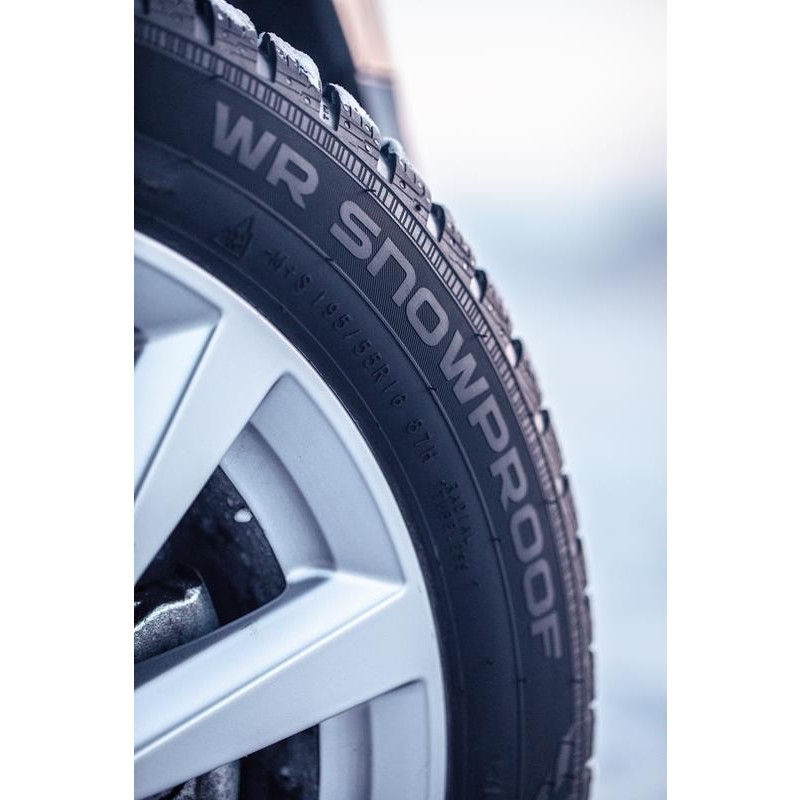 thousand or at the time of changing seasonal tires, it is advisable to change it in places.
thousand or at the time of changing seasonal tires, it is advisable to change it in places.
Changing front tires to rear tires
Scheme of permutation of 5 car wheels
Please note that although there are tires with directional and non-directional patterns, you still cannot change the direction of rotation of the wheel. And in the second option, the front wheels must be reboarded before being installed back.
It is necessary to check if the tires are installed correctly in relation to the rims, which is usually indicated on the sidewalls of the tires, this is important, since if the tires rotate in the opposite direction to the design, all their performance will be significantly reduced in all modes of operation of the car.
Non-directional tire replacement chart
Shift scheme for all-wheel drive vehicles

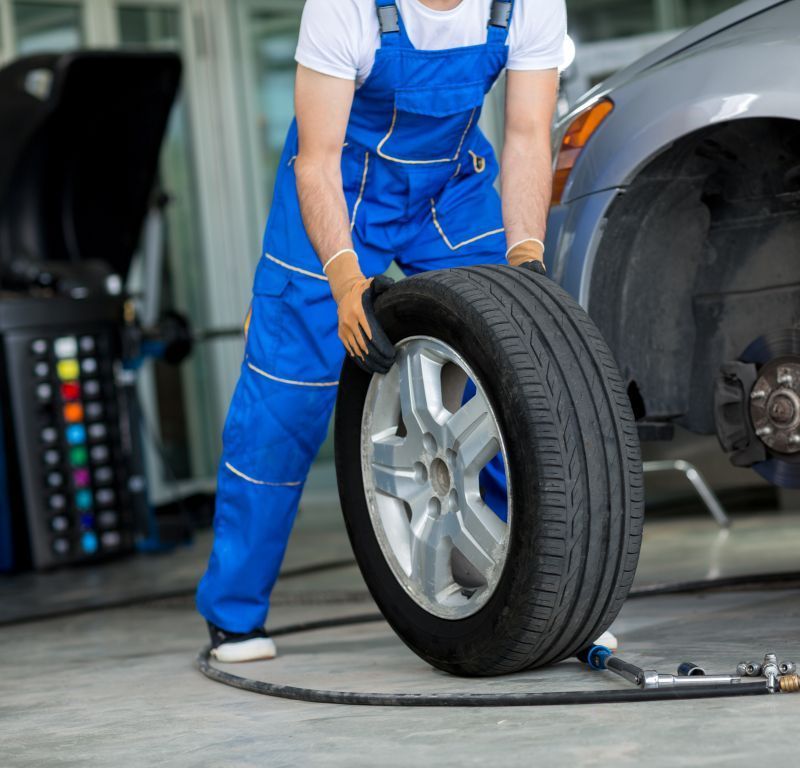
Experts recommend that you regularly check the condition of your tires, monitor the pressure and degree of tread wear. After all, it is much more profitable to fix a malfunction in the early stages than to change all the rubber later. It must be remembered that proper and timely tire care is your safety and guarantee of the durability of your rubber.
Didn't find the answer to your question?
Source: https://etlib.ru/blog/604-srok-ekspluatatsii-avtomobilnyh-shin
Warranty is a statutory obligation of the seller to be responsible for the material defects of the goods within a certain period.
All tires sold in Centershin.ru stores are subject to manufacturer's warranty obligations provided that the operating conditions of car tires are complied with. The warranty period is 12 months from the date of sale.
Keep your receipt for a year
The manufacturer guarantees
A manufacturing defect revealed during the operation of tires can be accepted as a reclamation case if there is an independent examination report. The body that carries out this procedure is the manufacturer of the product.
The body that carries out this procedure is the manufacturer of the product.
Warranty does not cover damage caused by the fault of the vehicle owner
The warranty does not apply to tires with defects that arose due to the following reasons:
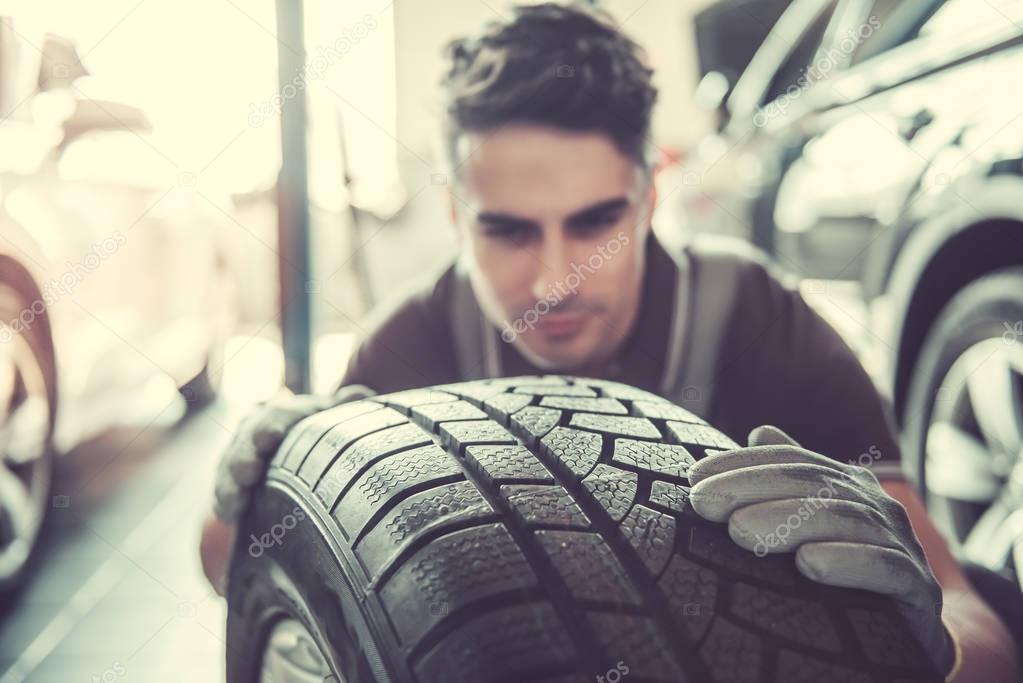 6 mm;
6 mm; All rims sold in Centershin.ru stores are subject to manufacturer's warranties. The manufacturer guarantees the quality of the wheels and their compliance with the requirements of the standard, subject to the conditions of use, transportation and storage. The warranty period is 12 months from the date of sale.
Warranty cases include defects in the coating, construction and components of the rim that occurred during operation.
Paintwork:
Wheel metal and construction:
Wheel accessories:

The buyer has the right to exchange the product for the necessary one if the purchased product does not meet any requirements. The exchange period cannot exceed 14 days from the date of purchase.
The exchange is made if the goods were not in use, the presentation is preserved, there is a sales receipt or delivery note for the presented goods indicating the date of sale and confirmation of payment.
Source: https://centershin.ru/guarantee/
Car tires tend to lose their properties regardless of whether they are in use or in stock. Over time, the rubber begins to oxidize and cracks appear on it. Therefore, performance is degraded.
If the tires are new, then the tire life for the car is limited to 5-6 years. For 2019, there is no law that would regulate the period of use and storage conditions for tires, but there are only recommendations from tire companies.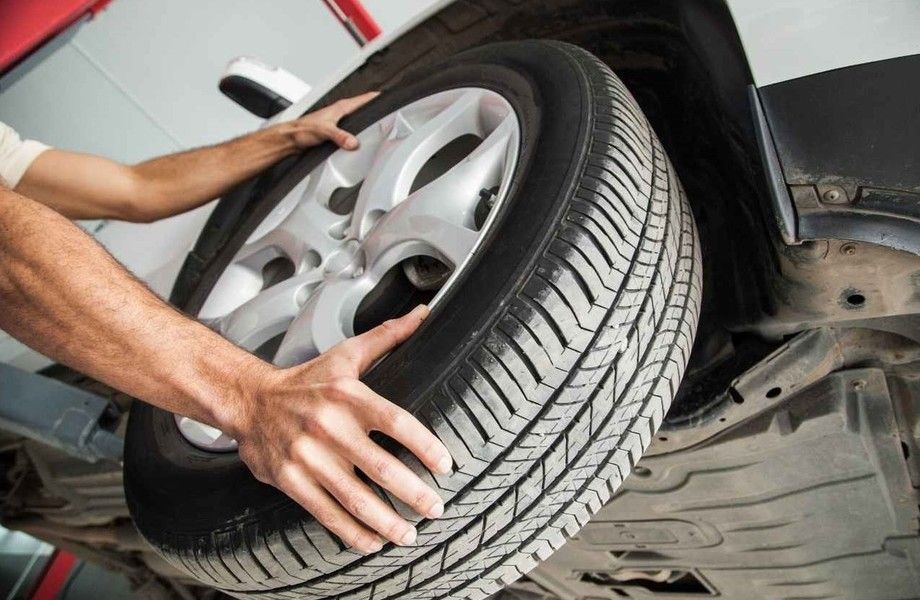
Manufacturers do not recommend using rubber that is more than 10 years old. After a certain period, the rubber compound becomes stiffer. This has a bad effect on the consumer properties of tires.
The possibility of further operation is determined by the buyer, based on their technical condition.
In accordance with GOST 52900-2007, the period during which the tire manufacturer guarantees the absence of manufacturing defects is 5 years from the date of manufacture.
However, the conditions for transportation, storage and operation of tires must be observed.
Storage conditions depend on tire shops and tire companies. The warranty period for car tires in accordance with the standards is valid for a year until the minimum residual depth of the tire tread is maintained.
Warranty covers hidden manufacturing defects. The manufacturer guarantees that the tires comply with the declared parameters, provided that the consumer observes the rules and regulations of maintenance.
Return or exchange is allowed only if the original packaging, complete set and warranty card, which is issued upon transfer of the goods to the buyer, have been preserved. At the same time, car tires should not have traces of use.
Tires must be checked for defects upon receipt. If a defect is found in appearance, the goods can be exchanged within two weeks from the date of purchase.
Otherwise, claims regarding the appearance of tires will not be accepted. New tires with factory defects found during installation are subject to exchange.
Please note that the balancing warranty only applies to new tires that did not meet the balancing tolerances during the initial installation on the rims, which in turn have no balancing deviations.
Warranty does not apply in the following cases:
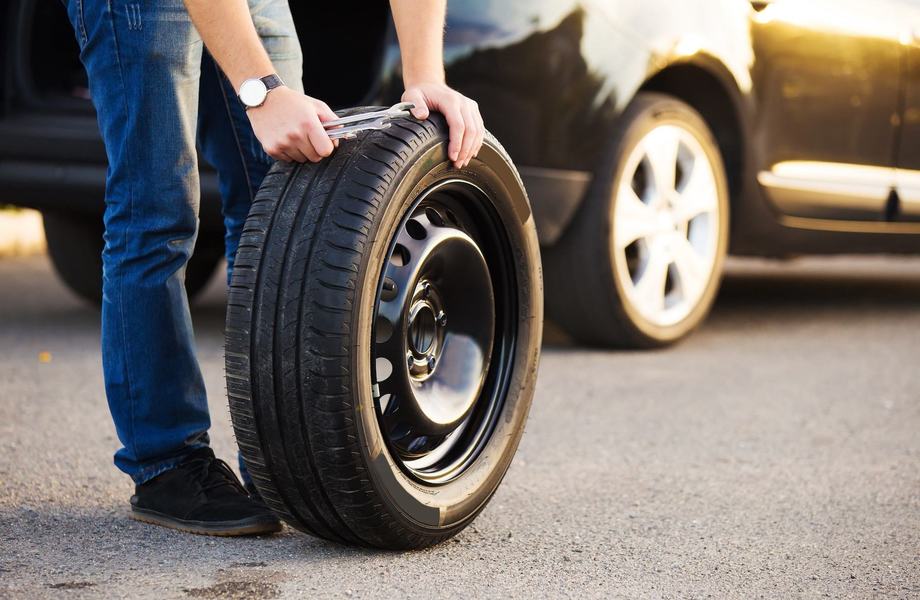
Claims that tires make unacceptable noise while driving are not covered under warranty as they are not a manufacturing defect.
All disputes are considered on the basis of the law "On Protection of Consumer Rights".
When buying a new tire, car enthusiasts are interested in the question that concerns the life of car tires and how long the tire has been in stock.
There are two regulatory documents that regulate the period of storage of tires in warehouses, as well as the necessary conditions that must be created for this:
Thus, according to GOST, the maximum shelf life is 5 years . But this does not mean that after this period, the tires are unusable.
But this does not mean that after this period, the tires are unusable.
Even after 5 years, the splint can be used if it has been stored in the correct conditions, namely:
Thus, the official shelf life of tires for a car without operation is 5 years.
In addition, it is very important that the rubber is not stacked or suspended from hooks. After some time, the tires need to be shifted.
If the tire sidewalls are deformed and small cracks or swollen areas are found, then this indicates improper storage of tires in the warehouse.
Tire manufacturing date is encoded in a small oval next to the brand name. It is represented by a four-digit number. The first two digits indicate the serial number of the week, and the second two indicate the year.
For example, if a person came to buy winter tires, and the date of manufacture is 3512 or 3411, then these tires were produced in 2012 or 2011. It is not recommended to buy such products.
But if the sellers offer a significant discount, and there are no visible defects, then such a purchase will be entirely the responsibility of the buyer.
The tires must be guaranteed, you need to make sure that the seller correctly entered the serial numbers.
Car tire life is defined as 5-10 years .
With use, the tread wears off and the tire is unable to perform its functions. Good handling and short braking distances can no longer be ensured.
In addition, article 12.5 of the Code of Administrative Offenses provides for a fine of . If the residual tread height is less than 1.6 millimeters, then it is forbidden to drive on it.
Therefore, the life of tires can be determined by the tread, this is the period until which it is erased.
Other problems may appear with use:
Such nuances may be caused by the quality of the tires themselves or the individual characteristics of the vehicle.
If you follow the optimal driving conditions and rules of car operation, you can extend the life of your tires.
If motorists like to prove their driving skills, abrupt starts with slippage, braking at high speeds and the like, then the rubber is unlikely to last long.
For tires to last as long as possible, the following rules must be followed:

Small cracks on the sides are signs of aging on the tires. This does not mean that you need to immediately go to the tire shop, but it is important to monitor the condition of the rubber more closely.
And it is also necessary to pay attention to the condition of the spare wheel or addendum . Experts recommend purchasing rubber patch kits and a special automotive sealant.
After the initial installation of tires, the expiration date for mileage is 1500-2000 kilometers. Then corrective balancing is necessary at a qualified tire center, where the relevant documents for the work performed are submitted.
In the subsequent period of operation, it is recommended to carry out balancing every 10,000-12,000 kilometers . Doing so will extend the life of your tires.
Doing so will extend the life of your tires.
Mounting and balancing of tires should only be carried out by qualified workers using special equipment.
The service life also depends on the following factors:
Thus, the shelf life of tires for a vehicle according to GOST without operation is five years . But with proper storage, rubber may not lose its properties even after this period.
Tire life is 6 to 10 years . This indicator is influenced by many factors.
The possibility of using rubber is determined by the tread, its thickness should not be less than 1.6 millimeters. Otherwise, the driver faces a fine for driving on worn tires.
When buying tires for a vehicle, you should always pay attention to the date of manufacture. As tires undergo aging due to physical and chemical processes. This also applies to unused and underused tires.
Source: http://zaschita-prav.com/srok-godnosti-shin-dlya-avtomobilya/
The warranty is not only a tribute to the legislation obliging manufacturers to be responsible for the quality of their products, but also a serious argument that can lure the client.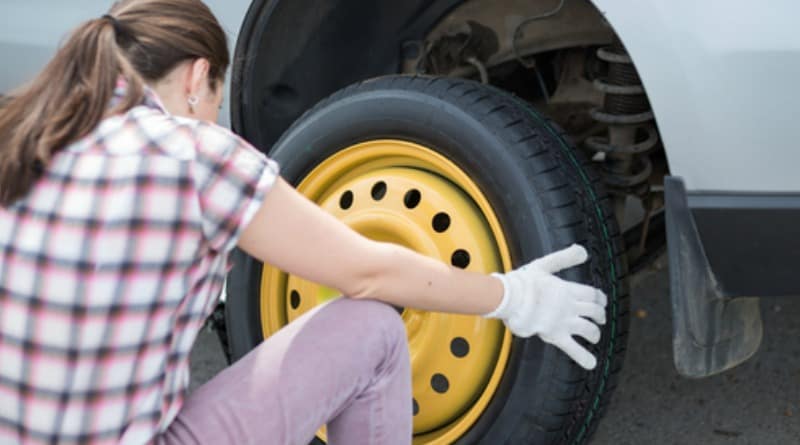 That is why sometimes manufacturers promise conditions that are not very favorable for themselves at first glance.
That is why sometimes manufacturers promise conditions that are not very favorable for themselves at first glance.
Most often they trump the terms of the warranty. And therein lies a paradox.
After all, cars are not becoming more reliable, the complexity of designs is only growing: electronics, air suspension, gearboxes with two clutches ... However, the complication of cars has not affected the usual warranty periods.
Moreover, some manufacturers, including AVTOVAZ, have even increased them in recent years. And Hyundai and Kia have already established a five-year warranty. Not afraid to go broke? Apparently not.
Managers at car dealerships famously list parade dates and runs, but are silent about restrictions. Managers at car dealerships famously list parade dates and runs, but are silent about restrictions.
The very essence of business is to promise more and give less. Therefore, when entering a car dealership, it's time to realize that a guarantee is not a free gift. Partial reimbursement for repairs under warranty is included in the cost of the car. Plus, the obligation in the form of passing several MOTs at official dealers, whose tariffs are clearly overestimated relative to the average market.
Partial reimbursement for repairs under warranty is included in the cost of the car. Plus, the obligation in the form of passing several MOTs at official dealers, whose tariffs are clearly overestimated relative to the average market.
However, many car enthusiasts in pre-crisis times preferred to own a car only during the warranty period and then sell it. The warranty was usually two to three years.
Japanese manufacturers have always been supporters of a three-year "problem-free" period for the consumer, European manufacturers, with an eye on competitors, have gradually pulled up to this period.
The Koreans have gone one step further, and one can only guess how much the promises of "five years of free repairs" have affected sales of Rio and Solaris. But they certainly did!
Figuring out what is hidden behind the promise of "three years warranty" or "five years warranty" in each specific case is not easy, but it is useful in order not to harbor unhealthy illusions.

For example, no manufacturer provides a warranty for tires, consumables and lubricants, as well as for elements subject to wear and tear during normal operation (light bulbs, pads, filters). Many will not replace rubber suspension parts under warranty. That is, the levers seem to be covered by a guarantee, and the replacement of silent blocks is at the expense of the car owner.
The same approach - to gaskets (except for the cylinder head) and oil seals. Now imagine how many such non-warranty oil seals, for example, are on all-wheel drive Mitsubishi or Honda cars.
Warranty is valid only when mandatory maintenance has been completed. The warranty is valid only when mandatory maintenance has been completed.
Strictly speaking, there is no cheating in the terms of the guarantee - everything is reasonable and fair. As required by law, the manufacturer eliminates faults free of charge, but only those that have arisen through his fault.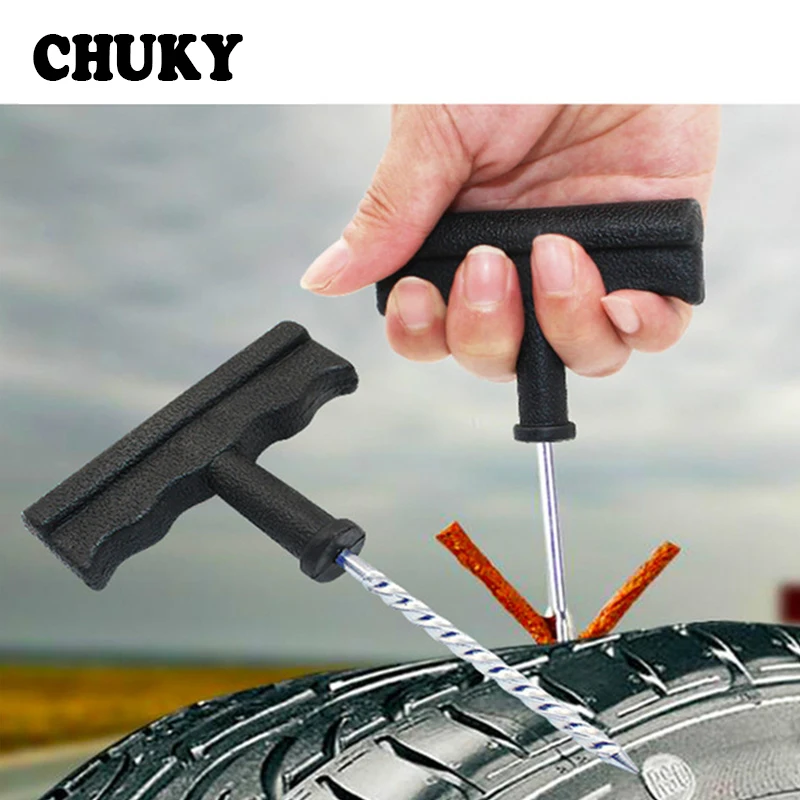 And at the same time, it is not responsible for shortcomings, breakdowns and damage caused by ... Further, a dozen reservations and explanations are usually listed in the warranty book.
And at the same time, it is not responsible for shortcomings, breakdowns and damage caused by ... Further, a dozen reservations and explanations are usually listed in the warranty book.
All of them boil down to the fact that any deviation from the operating rules or illiterate intervention is the reason for refusing to repair free of charge. This includes damage due to "use of low-quality fuel" or "defects in the road surface." Sometimes - "repair performed by an unofficial dealer", even if it is performed according to all the canons.
In disputable cases, the honorable right to prove that this or that breakdown was due to the fault of the plant or its dealer is transferred to the buyer. Such disputes often cause a public outcry, which creates the feeling that “our brother is being fooled” en masse.
In fact, “divorces” are rare, and the usual order of things is the amicable elimination of breakdowns in a warranty car (it goes quietly, does not cause resonance). After all, it is unprofitable for the plant to have a rumor about the extreme stinginess or dishonesty of its official dealers.
After all, it is unprofitable for the plant to have a rumor about the extreme stinginess or dishonesty of its official dealers.
But little tricks, of course, are not forbidden. Some manufacturers print warranty statements in very small print - as something completely unimportant. Managers at car dealerships usually famously list parade dates and mileage, but modestly keep silent about restrictions.
For example, a novice driver is going to buy a car with a manual transmission - please. But the clutch, which may suffer due to the inexperience of the beginner, will not be replaced under warranty. The exception is French manufacturers who “sponsor training” for runs up to 20 thousand and even up to 40 thousand kilometers.
| What should car owners who have problems with warranty repairs do? If you believe that the case is covered by the warranty, and the seller does not agree with this, you must obtain a written refusal from him and collect all documents related to contacting the dealer. If the purchased car turns out to be defective or of inadequate quality, you can return the vehicle under warranty. According to the law "On the Protection of Consumer Rights", any malfunction found within the first 15 days from the date of purchase, regardless of the nature and degree of complexity, is eliminated at the expense of the seller.
If the user has agreed to a warranty repair of the car, and the total time of all repairs exceeds 30 days in one calendar year, or a repeated repair of the same unit is necessary, this is also the basis for terminating the transaction. If the dealer cannot eliminate the technical defect within 45 days, the vehicle will be returned. |
When choosing a car, do not be too lazy to compare the warranty conditions for products of direct competitors. For example, Mercedes-Benz and BMW are covered by a two-year unlimited mileage warranty (a two-year minimum is stipulated by European law). But Audi has taken a big step forward: either the same option, or four years with a mileage of no more than 120,000.
Let's take a look at Asia. Only Toyota requires maintenance every 10,000 kilometers. But the list of parts and assemblies that are not covered by the warranty is one of the shortest. Leave more money on the service - sleep better.
At the other extreme are Korean automakers who take great pride in low vehicle maintenance costs. With a maintenance interval of every 15 thousand kilometers, they do not insist on a more frequent change of engine oil, even when operating in difficult conditions.
Among mass-produced cars, Korean ones look the most attractive in terms of warranty - five years or 150,000 kilometers! But only the engine and gearbox will be repaired for free during the entire period - unless, of course, you poured a surrogate into the engine and killed the gearbox with frequent starts with slippage. For some parts and assemblies, the warranty can be for a year, and with a mileage of up to 16-20 thousand. For many others, the usual option is three years or 100 thousand kilometers.
One anti-record belonged to Kia for a long time: it limited the warranty on the exhaust gas catalytic converter to a mileage of a thousand kilometers. Two gas stations and that's it.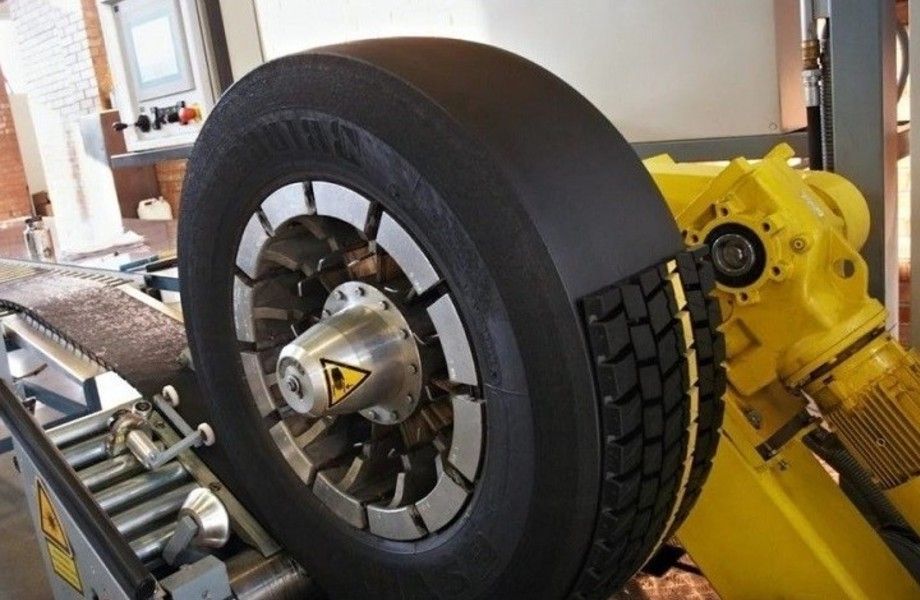
Fear of the unstable quality of Russian gasoline? However, cars of other brands also drive the same.
But last spring, the situation changed radically: the guarantee for converters was raised to five years with a mileage of no more than 150,000.
The Chinese often also announce a grandiose five-year warranty with a run of up to 150,000. But if you look at the lists of exceptions, then this is an almost complete catalog of car parts and components.
Lifan, for example, guarantees safety for five years only for the cylinder block (without piston rings and crankshaft liners), the block head (without all removable parts) and mechanical transmission housing parts.
And the first "failure" items in the warranty terms usually correspond to the age of the car one year or a mileage of 30 thousand kilometers: oil seals and bearings, elements of power systems, engine management and other electronics.
A separate topic is the body, the most complex and expensive part of the car. It is also under warranty, but its terms rarely coincide with the terms of the main one. And there are some nuances.
It is also under warranty, but its terms rarely coincide with the terms of the main one. And there are some nuances.
Most manufacturers provide a three-year, unlimited mileage warranty on sheet metal body panel paintwork. And the guarantee against through corrosion is from six to twelve years.
The Chinese are more likely to limit themselves to a three-year term.
There is one pitfall in the body warranty, and a very large one. Many authorized dealers routinely "forget" to inspect the bodywork during maintenance. If the owner reminds about this, then the inspection will be carried out and the results will be recorded by making additional marks in the service book.
But if there is any chip or scratch, the owner will have to fix them within one month at his own expense. Otherwise, the warranty is voided - both for defects in the paintwork and for corrosion. AvtoVAZ, for example, still requires processing of closed body cavities after the identified defects have been eliminated.
Also at the expense of the owner.
Are we prepared to comply with such conditions in good faith?
There are cases of mass defects associated with the method of installing various overlays on painted surfaces.
For example, in the X-Trail of the previous generation, the paint swelled on the tailgate: it was wiped off by an overlay for placing license plate lights. To the credit of Nissan dealers, they eliminated such a defect without question within a three-year period.
There are also cases (moreover, with cars of different brands) when decorative parts with chrome coating were replaced under warranty, which began to peel off during the warranty period.
So it's not out of place to follow people's Internet forums about your car. Car owners who have encountered a problem before you will warn you about ambush spots associated with paint and chrome coating. Yes, and on the mechanical part, there will certainly be hints.
Car owners who have encountered a problem before you will warn you about ambush spots associated with paint and chrome coating. Yes, and on the mechanical part, there will certainly be hints.
***
Conclusions and advice: When choosing a machine, do not be tempted by a long warranty. No manufacturer covers absolutely all components and parts with a guarantee. Different factories may have different lists of non-warranty cases, so look for the shortest one. The standard term of three years seems to be optimal - with an extremely modest list of restrictions.
| Warranty mileage (thousand km/years) | For body from through corrosion (years) | Paint (years) | |
| Audi
| unlimited/2 or 120/4 | 12 | 3 |
| BMW
| unlimited/2 | 12 | 3 |
| Chery
| 100/3 | n. | n.a. |
| Chevrolet
| 100/3 | n.a. | n.a. |
| Citroen
| 100/3 or unlimited/2 | 12 | 3 |
| Ford
| 100/3 | 12 | 2 |
| Honda
| 100/3 | 3 (100)* | 3 (100)* |
| Hyundai
| 100/3, for Solaris, Equus - 150/5 | 6 | 3 (100)*, for Solaris, Equus - 5 (150)* |
| Kia | 150/5 | 5 (150)* | 5 (150)* |
| Lada | 100/3 or 50/2 | 6 | n. |
| Lifan | 100/3 | 3 | 4 |
| Mazda
| 100/3 | 6 | 3 |
| Mercedes-Benz | unlimited/2 | 2 | n.a. |
| 9Mitsubishi 0004 | unlimited/2 or 100/3 | 12 | 2 (unlimited)* or 3 (100)* |
| Nissan
| 100/3 | 12, for vehicles Sentra, Tiida, Terrano, Almera - 6 | 3 |
| Opel
| 100/3 | 12 | 3 (100)* |
| Peugeot | 100/3 or unlimited/2 | 12 | 3 |
| Renault
| 100/3 | n. |